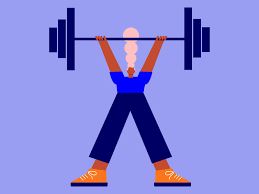You can’t out run a bad diet but you can out sit a good one.
You might be eating low calorie foods that are high in nutritional value, drinking plenty of water, avoiding sugary pop and drinking lite beer only on the weekends. But if you’re sitting at a desk or have another sedentary occupation or past time, the pounds will be hard to keep off. If you find your waist line is expanding in spite of your calorie counting it may be because you’re sitting too much. By being sedentary you’re also losing that precious muscle mass that keeps your metabolism at its peak.
Earlier this year, four experts for the Washington Post created a detailed list of everything that happens to the body when you sit for too long. The expert panel consisted of James A. Levine, inventor of the treadmill desk and director of Obesity Solutions at Mayo Clinic, Charles E. Matthews, National Cancer Institute and author of several studies on sedentary behavior, Jay Dicharry, director of REP Biomechanics Lab in Bend, OR and author of Anatomy for Runners, and Tal Amassay, biochemist at Barry University’s Department of Sport and Exercise Sciences.
Levine, Matthews, Dicharry and Amassay’s created list of health related issues that are the result of too much sitting. The three big ones are:
- Heart disease – muscles burn less fat and blood becomes sluggish in the veins when we sit. Prolonged sitting is also linked to high blood pressure and cholesterol which are also indicators of impending cardiovascular disease.
- Overproductive pancreas – The pancreas produces insulin which carries energy to the cells. If you’ve been sitting for awhile, the muscles don’t respond to the insulin so the pancreas has to produce more which can lead to diabetes. Scarier yet, according to the experts, a study was done in 2011 that showed a decline in insulin response after one day of prolonged sitting.
- Colon cancer – The reasons why colon cancer is more prevalent among sitters isn’t proven but it is believed to be related to the elevated levels of insulin that encourages cell growth.
Other reasons to move more during the day is to prevent mushy abs, tight hips, soft bones and a foggy brain. A sore neck and shoulders and back problems are also the by-products of immobility.
There’s More
You don’t need more bad new, but even if you get a healthy does of structured exercis
every week it doesn’t undo the health risks of sitting. One study shows that the negative effect of six hours of sitting is similar in magnitude to the benefit of one hour of exercise. That doesn’t mean that if you sit for eight or nine hours a day you have to exercise for three hours to make up for it. That would be impossible to do. What the researchers suggest is to break up the sitting with short doses of movement.
Taking short walks throughout the day, walking in place while you’re on the phone, and getting on the clothes rack treadmill while you’re watching T.V. are some simple ways to get more walking in. To get to the goal of 10,000 steps a day, you’ll probably need to get creative and do something extra. If you need some tips, click here.
Why This Is Important For You
A study published in the American Medical Journal shows that inactivity in American men and women continues to rise. Researchers at Stanford University Medical Center report that in 1988, 19 percent of women were inactive. By 2010, that number had jumped to 52 percent. For men the rate nearly quadrupled, going from 11 to 43 percent in the same period of time.
The study notes that what didn’t change is the number of calories people consumed. More calories and less activity is the formula for obesity.
I could have turned this into a post about 50 ways to put more steps in your day but I think you all know what you should do: park in the space farthest away from the store, take the stairs instead of the elevator, walk on your breaks at work. Knowing what to do and doing it are two different things.
Wear A Pedomoter
Wearing a pedometer will help you build the habit of reaching a walking goal. If you don’t wear a pedometer you don’t have any idea how many steps you’re getting in on an average day. It might be 2,000. That isn’t enough.
Try wearing a pedometer and set a goal to get to 10,000 steps a day every day for a week and find out what you have to do to get to the goal. If you’re a cube dweller it will be an eye-opener. It will help you reach your weight loss goals and might even save your life.




